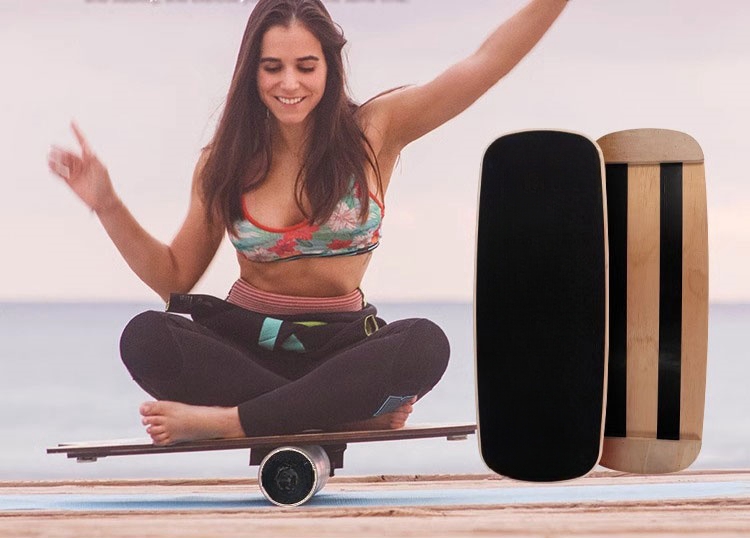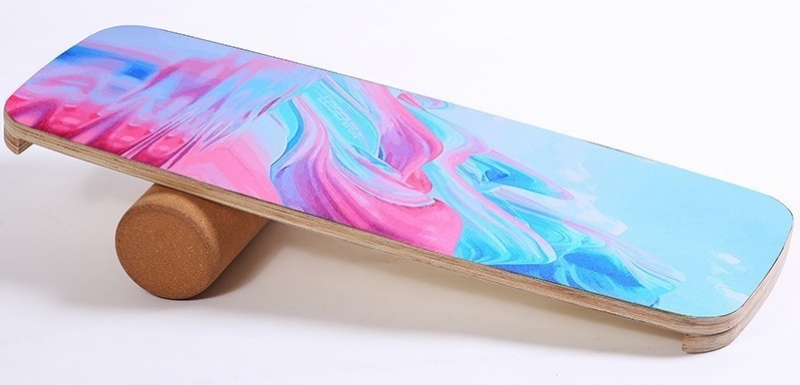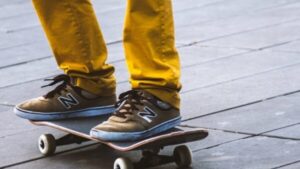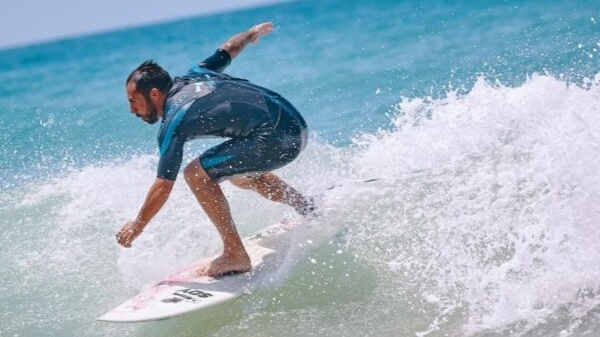
Balancing Board Safety Tips: Protecting Yourself During Workouts
Balancing boards provide an effective full-body workout, but the unstable surface can also lead to falls and injuries if proper precautions aren’t taken. By following

Balancing boards, also known as wobble boards, provide an excellent way to improve balance, coordination, and core strength. These unstable platforms challenge users to remain centered while standing or performing exercises.
With practice, balancing boards build lower body control and stability. This comprehensive beginner’s guide covers balancing board benefits, safety tips, stance fundamentals, easy starter exercises, progressing to advanced skills, muscles targeted, variations for custom challenges, and methods for incorporating regular balancing board training.

What is a Balancing Board?
A balancing board refers to any platform designed to be unstable underfoot, requiring continuous physical adjustments to remain upright and centered.
Traditional circular balance boards have a flat surface resting on a rounded or hemispherical base. Rocker boards instead use a curved surface balanced on two separate contact points. Either style demands focused effort to avoid tilting and falling off during use.
Boards come in a variety of sizes, shapes, and construction materials. Smaller boards around 15 inches in diameter offer greater instability for beginners. Larger surface areas up to 36 inches help advanced users learn dynamic skills. Round and square boards incent different movement patterns. Wood, plastic, and compressed foam bases provide varying friction and traction.
Regular practice with a balance board offers extensive fitness and health benefits:
The constant instability forces muscles to activate in an integrated manner, honing natural motor control far more than stable exercises alone. Frequent short sessions train the body to smoothly react to any disruptions in equilibrium.
Unlike stationary balance pads, balancing boards are dynamic, allowing practicing controlled weight shifts and pivots. The external tilting forces activation of hip and leg musculature to remain centered.
The unstable nature of balance boards means caution should be exercised to avoid falls, especially when learning:
Proper stance and balance will be discussed next to maximize safety. Don’t hesitate to take breaks if you feel fatigued or discomfort when learning.
Proper form is crucial when using a balance board to maximize control and safety. Follow these key stance principles:

When first stepping on a balancing board, simply remaining upright can be a profound challenge. Try these starter exercises to acclimate before progressing to dynamic skills:
Stand in a ready position on the board. March in place slowly, raising each knee in an exaggerated manner while maintaining balance. Work on smooth transfers of weight from foot to foot.
From the ready position, drive one knee upward while keeping both feet in contact with the board, then lower and switch knees. This teaches balance recovery after a slight disruption.
Start in a ready position, then slowly rock weight back and forth from heels to toes in controlled movements. Focus on re-centering yourself after each weight transfer.
Lightly shift your entire body forward and then back from a ready position while maintaining an upright balance. Only move a few inches and focus on the point of pivot.
The same as forward dips but shift your weight gently from side to side over feet. Keep motion small while finding the stability limits.
Mastering these foundational exercises teaches proper balance board body mechanics in a low-impact manner. The goal is to develop a mindful, centered approach to movement.

Once able to solidly hold a position on the balance board, try adding dynamic motions to increase the challenge:
Standing on the board, engage your core and slowly lift one knee up in front of you, hold briefly, then lower and repeat on the opposite leg.
From a centered stance, slowly lean your body forward and back, turning at the hips rather than bending at the waist. Lean only to the point of feeling a weight shift.
Take small careful steps while keeping your torso steady as you walk back and forth across the board. Turn smoothly rather than abruptly.
Perform partial squats, bending knees and sitting back while maintaining upper body position. Keep motion small and controlled.
While standing steadily on the board, make controlled forward and backward circles with both arms extended. Keep circles smaller to avoid overbalancing from motion.
These dynamic drills improve reflexive balance reactions by forcing your body to stay upright through movement. Perform them slowly and evenly at first.
Balancing board exercises heavily engage the following muscle groups:
While calves and shoulders see lighter loads, the constant adjustment works all areas in an integrated manner unique to balancing.
When progressing to more challenging balance board exercises, keep in mind these common beginner mistakes:
Learning proper balanced form requires patience. Small controlled motions help build muscle memory. Don’t rush into unstable explosive movements.
Squats and lunges allow stepping up the balance and strength workout but require good technique:
Many balance board injuries occur from overzealous squats and lunges. Master basic standing exercises first before adding challenging multi-joint moves.
Once proficient at the beginner drills, adding variations mixes up the challenges:
Don’t rush into advanced variations until ready. Incremental progress allows building true balance skills that translate into everyday life.

Daily short sessions on the balance board produce better results than longer periodic workouts:
Even 5-10 minutes per day engages those stabilizing muscles and neural connections. Be patient and allow skills to develop. Balancing abilities will improve steadily over weeks of practice. Avoid overtraining legs and hips at first, which can lead to strained joints or falls.
When selecting your first balancing board, consider:
Avoid extremely cheap boards which may break under loads. Seek appropriate sizing to match your height and skill level. Consider round-edged boards to limit foot slipping while learning.

Balancing boards provide an inexpensive tool anyone can use at home to improve balance, coordination, strength, and fall protection – essential qualities at any age. Start slowly, focus on proper stance, and progress to dynamic moves with mastery. Be patient and keep sessions short and frequent. Just 10 minutes a day delivers compound benefits for body control, making balancing board training a rewarding lifelong practice.


Balancing boards provide an effective full-body workout, but the unstable surface can also lead to falls and injuries if proper precautions aren’t taken. By following

So you’ve mastered the basics of balancing on a rocker or wobbleboard. You can tilt and pivot with ease. Now you’re ready to take your

Store-bought balancing boards can be expensive, costing anywhere from $50 to over $200. But with some simple tools and materials, you can make your own

Balancing board training has become a popular way to challenge your coordination and engage those all-important core muscles. Unlike stable machines at the gym, balancing

Balancing boards provide an effective full-body workout, but the unstable surface can also lead to falls and injuries if proper precautions aren’t taken. By following

So you’ve mastered the basics of balancing on a rocker or wobbleboard. You can tilt and pivot with ease. Now you’re ready to take your

Store-bought balancing boards can be expensive, costing anywhere from $50 to over $200. But with some simple tools and materials, you can make your own

Balancing board training has become a popular way to challenge your coordination and engage those all-important core muscles. Unlike stable machines at the gym, balancing
Copyright © 2024 equistablebalancingboard. All Rights Reserved.